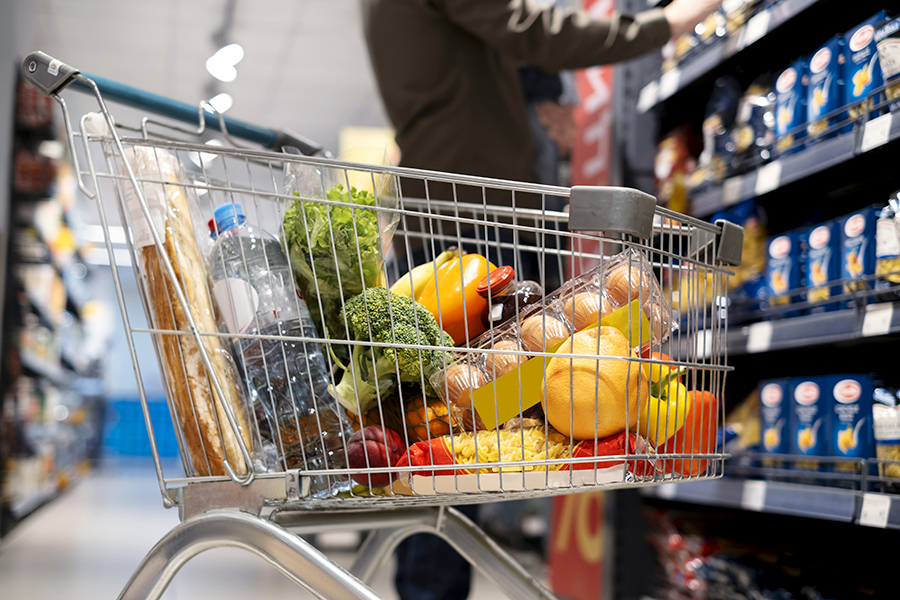
Food consumption in the GCC is set to grow at a CAGR of 2.8% to reach 56.2 million MT by 2027, estimated Alpen Capital in its recently released ‘GCC Food Industry’ report.
Future growth is expected to be driven by an increase in population, rise in per capita income and rebound in tourism activities. The regional governments are also taking several initiatives towards ensuring a sustainable supply of food items to meet the rising demand. Moreover, growing awareness of healthy eating habits coupled with increasing penetration of the food services sector offering global cuisines are likely to aid the food consumption across the GCC over the next five years. The per capita consumption in the GCC is forecasted to reach 904.1 kg by 2027 from an estimated 872.5 kg in 2022, growing at a CAGR of 0.7%.
The country-wise food consumption share in the GCC is projected to change marginally through 2027. While Saudi Arabia will continue to remain the largest GCC market in terms of food consumption, its share is likely to fall from an estimated 57.1% in 2022 to 55.5% in 2027. Bahrain is expected to witness the highest CAGR at 4.5% whereas the UAE and Saudi Arabia are expected to growth at moderate paces of 3.3% and 2.2%, respectively, largely in line with their population growth.
The report states that the growth among different food categories is forecasted to range between 2.0% and 3.2% from 2022-27. The vegetables category is projected to secure the highest CAGR at 3.2%, closely followed by ‘others’ and meat at 3.1% each. The ‘others’ food category consists of commodities such as eggs, fish, pulses, oils & fats, potatoes and honey products.
The GCC economies have made a strong recovery following a period of pandemic-led economic distress. This can be attributed to the successful COVID-19 mitigation strategies implemented by the governments, positive business and tourism sentiment driven by mega events, along with rebound in the hydrocarbon market. The region’s expanding population base that largely comprises of young and working-class professionals has led to the rise in demand for new dining concepts and diverse cuisines, including boosting consumption of healthy foods and ready-to-eat varieties. The governments have also increased their focus towards sustainable agricultural practices with the aim of enhancing domestic output while encouraging the use of greenhouse, hydroponic and aquatic farming, and leveraging other technologies such as artificial intelligence (AI) to increase agricultural efficiency and yield. The confluence of all these factors is expected to positively drive consumer sentiment, spending and food consumption over the long-term.
However, the report highlights that the global economy is expected to remain weak in the short to mid-term, largely impacted by the geopolitical conflicts. These conflicts are likely to weigh on global economic activity, raise inflation and cause supply-chain problems. Additionally, the challenge of food security continues to strain the GCC governments despite successful efforts to increase local production. The GCC food industry is also vulnerable to global price fluctuations and supply-chain disruptions as over 85% of the region’s food requirement is imported.
With chronic and lifestyle-related diseases becoming a major concern for the population, there is heightened awareness for healthy eating habits, which is also being promoted by the regional governments. This has not only boosted the demand for organic food but has also encouraged restaurants and food services players to concentrate on procuring and producing healthy food items. The region is witnessing a large-scale movement in the agritech sector via investments and partnerships, between private players and governments, with the aim to gradually build capacity to produce sufficient yields of affordable food with minimal resource utilisation.
The governments’ effort to enhance food production is encouraging local as well as international players to expand their presence while also helping reduce the demand-supply imbalance and consequently food costs. Going forward, focus is likely to be directed towards value creating opportunities, with particular emphasis on agritech. The industry is likely to witness consolidation amid cost-containment issues and limited room for differentiation in service offerings.
Notifications